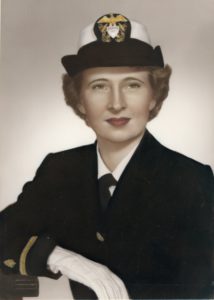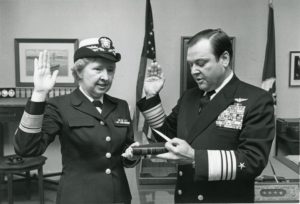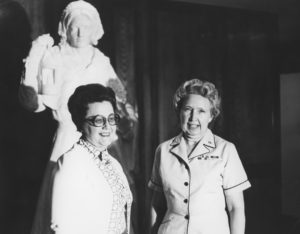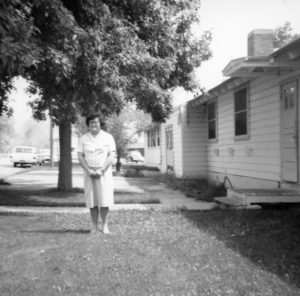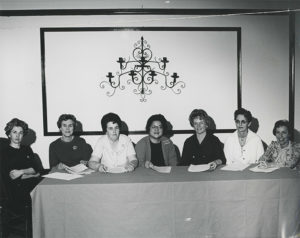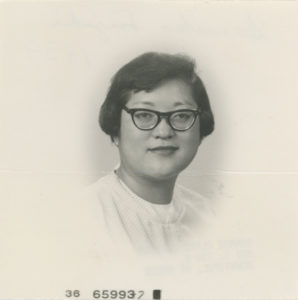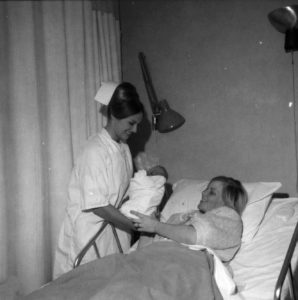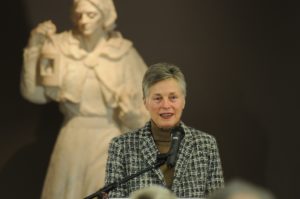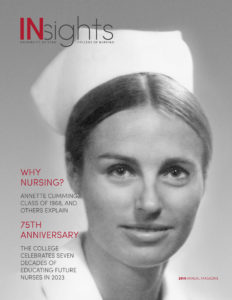History of the College of Nursing
For the past 75 years, the University of Utah College of Nursing (CON) has unified and inspired scientists, educators, clinicians, staff, and students to design, lead, and achieve improvements for the well-being of all.
This digital exhibition is best viewed on a desktop or tablet. For a mobile-friendly version of the timeline, click here.
Early Beginnings
1913-1940
The College of Nursing’s history began in 1913, when the dean of the School of Medicine at the University of Utah started teaching anatomy and physiology in the Salt Lake City schools of nursing. By 1930, six “basic nursing courses” were taught in the Salt Lake diploma schools by faculty of various departments. For the next nearly thirty years the University maintained a strong affiliation with the Salt Lake General Hospital School of Nursing.
1941-1943

When Congress appropriated money for nursing education programs in 1941, the University was awarded funds to establish a Department of Nursing Education.
Phoebe Kandel ( Rohrer), MS, was appointed chair of the newly organized department in 1942. Kandel was an energetic nurse activist who traveled across the United States promoting mandatory state licensure for nurses. She joined the University of Utah as a visiting lecturer, teaching courses in ward management and other related topics. As chair of the new Department of Nursing Education, Kandel recognized the need to secure faculty with credentials within the world of academia. Kandel stayed at the University of Utah only briefly before relocating to Georgia and founding the Nursing School at the University of Georgia.
The Bolton Act
After the United States entered World War II in 1941, the need for nurses was at an all-time high.
As a result, nursing leaders sought practical solutions to supply enough nurses for the war. The Bolton Act of 1943 introduced the U.S. Nurse Cadet Corps and, at the time, was considered the largest experiment in federally subsidized education in the history of the United States. The Bolton Act had a profound effect on nursing education. The Corps’ emphasis on an academic approach over apprentice-style training led to both increased course offerings and faculty sizes. In the first semester of the Cadet Nurse Corps program at the University of Utah, 150 women registered. Students admitted to the program received a scholarship that covered tuition and fees, along with a monthly stipend. Nurses in the program were set to graduate in 30 months, as opposed to the usual 36 months, and serve as nurses for the duration of the war. The last class of cadets graduated in 1948.
Student Nurses, Utonian yearbook - 1950
1948-1958
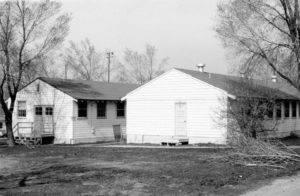
1948: The University of Utah’s three-year diploma programs were phased out, and the nursing program became a full-fledged College. At that time, the College was housed in Building 430, a one-story, surplus barracks building which had been restructured into classrooms, offices and laboratory space to accommodate the growing needs of the program.
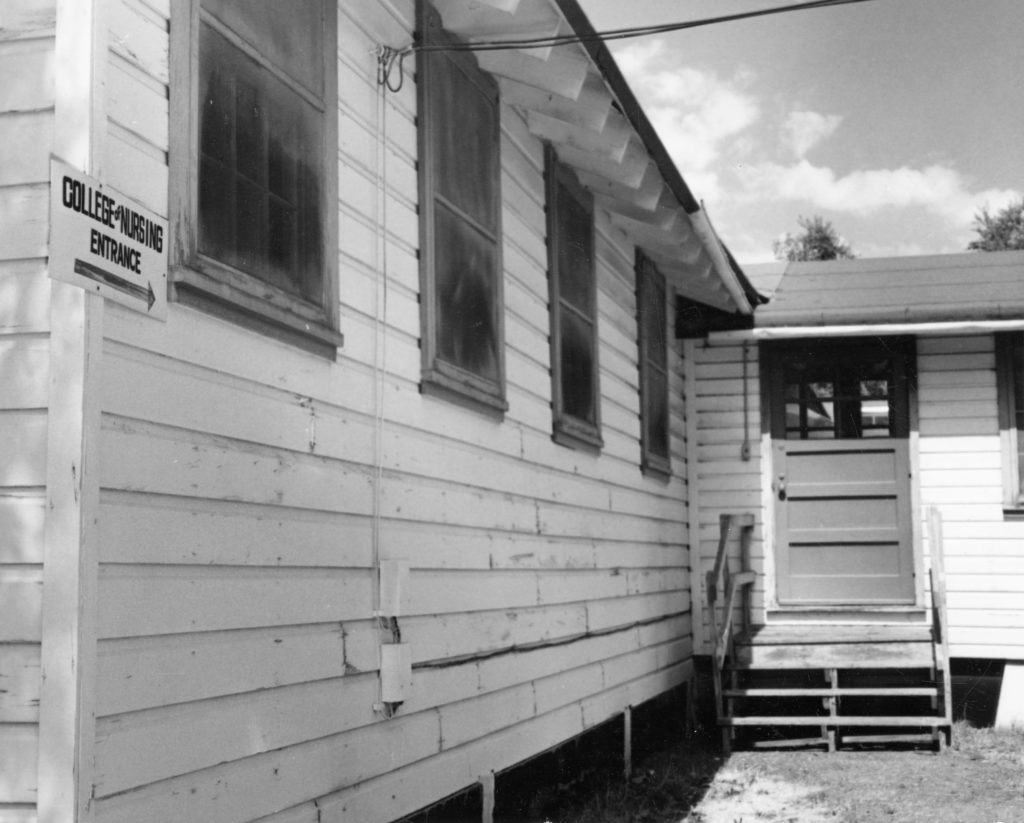
1948: Hazelle B. Macquin, MS, was named the first Dean of the College of Nursing. The crowning achievements of Macquin’s career happened while she was at the University of Utah: achieving College status for nursing, and successfully launching the baccalaureate program.
1953: Dean Macquin stepped down to become the Director of Graduate Programs in Nursing. She used her considerable writing skills to prepare the College for accreditation through the National League for Nursing (achieved in 1955) and write a justification for the graduate program.
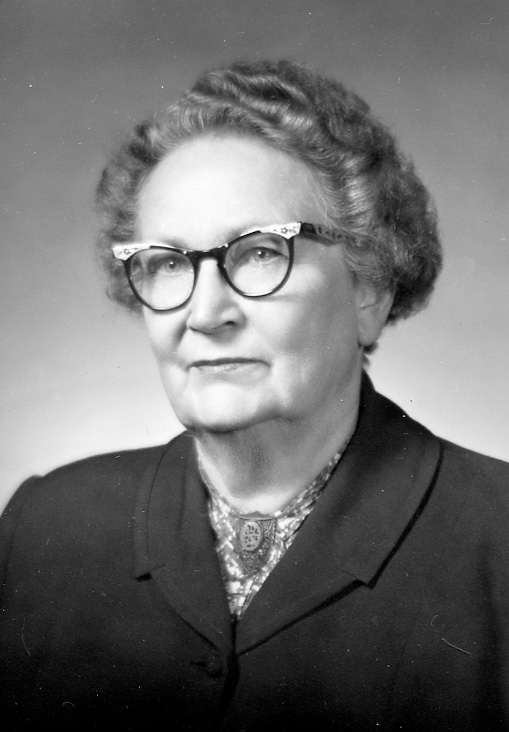
Hazelle B. Macquin, Salt Lake City, Utah: an interview by
Bonnie Clayton. 1983.

1954: Mildred Rordame Quinn, MS, was named the second dean of the College. Quinn was a formidable force in gaining College status for the Nursing Program, and, later, in establishing the Master of Science Program and laying the groundwork for the Doctoral Program. In addition to her work at the University level, Quinn was active in state, regional, and national nursing initiatives. Dean Quinn has not only left a lasting legacy on the College of Nursing, but also the State of Utah, and the Western Region.
Mildred Quinn, Salt Lake City, Utah: an interview by Jan Brugel
and Lisa Litton. 1985.
Mildred Quinn, Salt Lake City, Utah: an interview by Bonnie
Clayton. 1983, 1984.
1955: Full accreditation for the baccalaureate program was received from the National League of Nursing.
During most of this period, baccalaureate students continued to live at the Salt Lake General Hospital Nurses Home. Nursing courses were held there, and students traveled to campus to fill their University requirements.
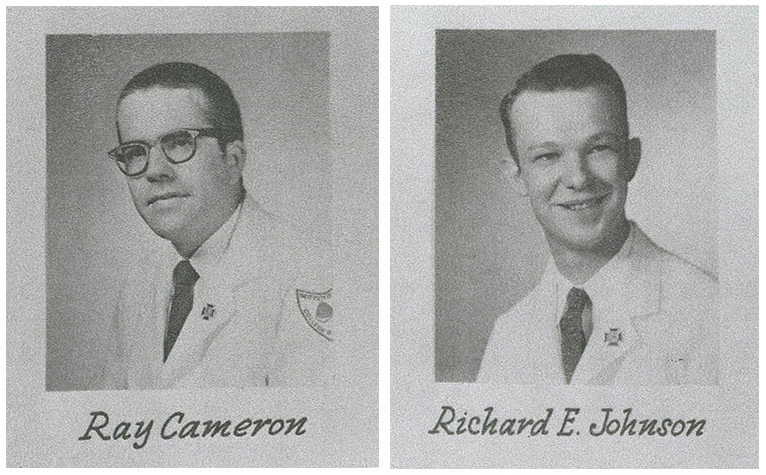
Two men, Ray Cameron and Richard E. Johnson,
became the College’s first male students (Class of 1959).
They were excluded from classes teaching catheterization of females, and were often thought by hospital staff
to be orderlies.
In the mid 1950’s, federal money to increase the quality of care for people suffering from mental illness became available to medical programs and facilities across the United States.
Esther Garrison, a nurse from the Division of Nurse Training at the National Institute of Mental Health consulted with nursing faculty at the University of Utah on the best way to access and utilize this funding. As a result, during the 1956-57 academic year, the College of Nursing submitted two grants: one to integrate psychiatric nursing theory and practice into the Baccalaureate nursing program, and another to start a graduate program in Psychiatric Nursing.
1957: Both grants were approved, and money became available at the start of the 1957-58 academic year. Sumiko (Sue) Fujiki, PhD, was hired to lead this new graduate psychiatric nursing program, and four students enrolled in the program in its first year.
College of Nursing, University of Utah - 1960s
1958-1968
1961: The Medical-Surgical graduate program was established. When it first started, it had a strong focus on rehabilitation and later incorporated a strong family health focus. In 1968, a minor in biochemistry became a requirement for this program.
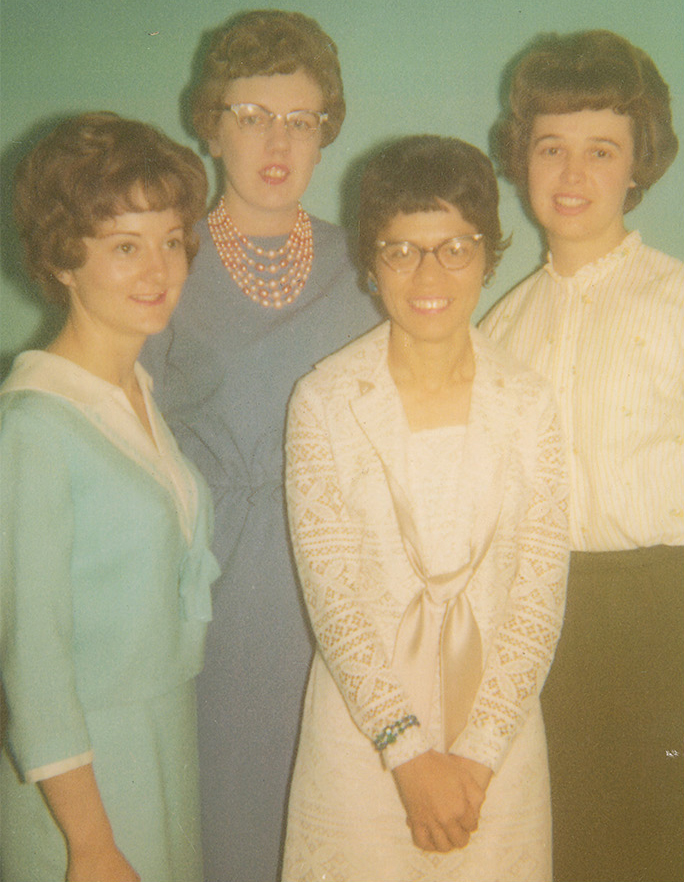
1964: Joyce Cameron Foster, MSN, PhD, was hired to design and implement the Maternal and Child Nursing Program (now the Nurse Midwifery graduate program). This was the third graduate program created in the College. The purpose of the Maternal and Child Nursing program was to train professional
nurses as clinical nursing specialists with functional preparation in teaching, supervision, and consultation.
1965: Four students were admitted to the program. Three of the four students completed their studies and graduated in 1967. Foster was named the program’s first director. In January 1965, the College of Nursing Graduate Committee, the University of Utah Graduate Council, and the Faculty Council approved the proposed master’s program. In September 1965, the first class of four students was admitted into the program.
The Maternal and Child Nursing graduate program was the first of its kind west of the Mississippi to include nurse-midwifery as an integral part of the curriculum.
Joyce Cameron Foster, Salt Lake City, Utah: an interview by Jan Brugel
and Lisa Litton.
Photo: Nurse Midwifery Class of 1967 (left to right): Ann Peterson, Idamae Kelii Sine, and Carolyn Thomas and Program Director Joyce Cameron Foster.
During this period, continuing education efforts were first established for nurses in the community.
The newly created Continuing Education in Nursing program was elevated to division status within the College. The program not only developed a strong association with the University of Utah’s Division of Continuing Education, but it also coordinated its efforts with the newly adopted Utah Nurses’ Association certification program.
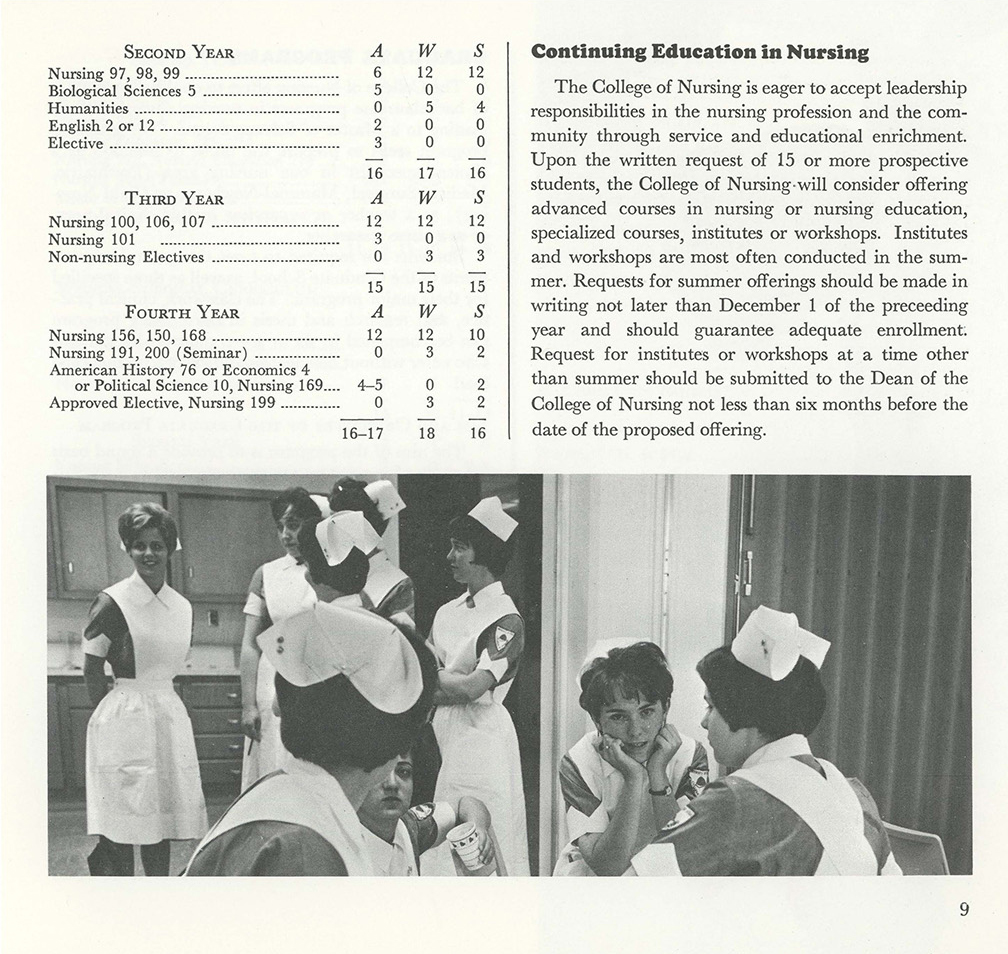
The facilities lacked basic elements needed for the most effective teaching and learning.
After many years in an old, converted surplus barracks building on campus, Dean Mildred D. Quinn applied for a construction grant through the federal government to build a dedicated building for the College of Nursing.
Groundbreaking
1966: The construction grant was approved, with matching funds provided by the Utah State Legislature. Construction of the new building began later that year.
1968-1978
January 1, 1969: The College of Nursing took
occupancy of its new building.
November 1, 1969: The College of Nursing building was dedicated.
Unique features of the new nursing building included basic and advanced Learning Resource Laboratories; Life Study, Physiology, and Behavioral Observation Laboratories; a fully equipped television studio with color reproduction capability; and a research center. The new College of Nursing building was also the first building on campus with an underground parking garage.
For Mrs. Quinn and her staff, the building will be an old dream come true, as well as the end of a long, hard-fought battle. During the fight, the dean became one of the nation’s leading spokesmen for a new look in nursing education, the facilities of which had long been confined to the back alleys, basements, and barracks of the nation’s campuses. Mrs. Quinn now serves on the federal review committee for allocating funds under the 1964 Nurse Training Facilities Act.”
— University of Utah Review, November 1967
1970: The Maternal-Child Nursing Project was created in Shiprock,
New Mexico, on the Navajo Reservation, and ran for more than 15 years. The project provided unique clinical experiences for nurse-midwifery, pediatric, and psychiatric nursing students. Practice sites were also expanded to the Hill Air Force Base Hospital, Tooele, and Vernal, Utah.
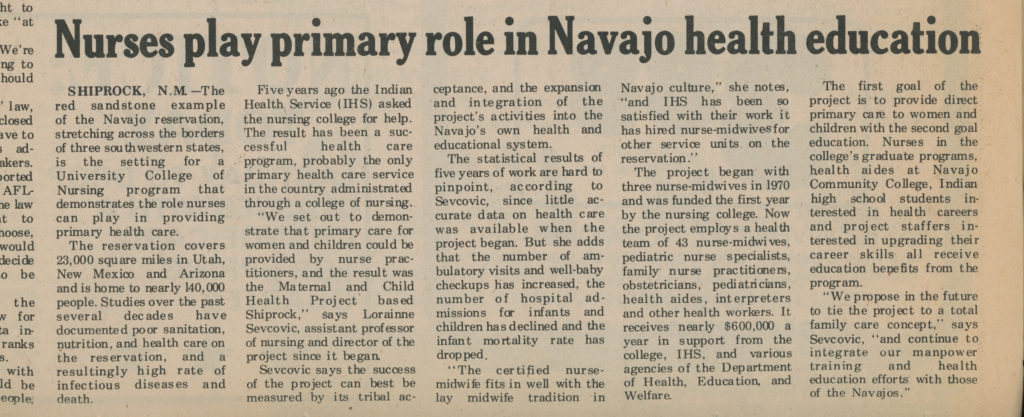
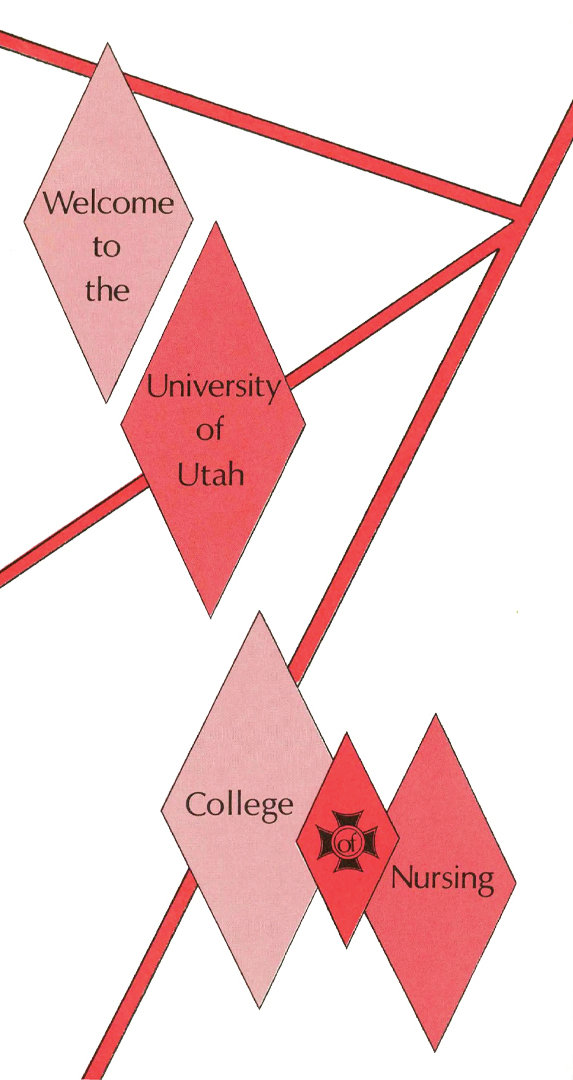
1972: The Board of Regents in Utah approved the creation of the Rocky Mountain Gerontology Program. Five universities across the State of Utah established a consortium to provide a collaborative educational effort to offer students training and credentials in the field of aging. This collaborative effort also encouraged faculty members to develop expertise in aging that could then enrich their course curriculum. Funding was later provided by the Administration on Aging. The five-school consortium was comprised of the University of Utah, Utah State University, Weber State College (now University), Brigham Young University, and Southern Utah State College (now Southern State University).
1973: Dean Mildred D. Quinn retired and Associate Professor Bonnie Clayton, PhD, was named Acting Dean.
In 1972 five full time faculty held an earned PhD; in 1977 there were 21 full time or part time teaching faculty with an earned PhD; and by 1978, the College of Nursing had 25 doctoral faculty.
1974:
— After months of planning, the first class of students was admitted to the Family Nurse Practitioner training program (now the Family Nurse Practitioner track within the DNP program). This program prepared family nurse clinicians to provide continuous, comprehensive, personalized primary care to families. The major course content focused on advanced sciences, advanced clinical skills, research, nursing theory, and role changes. Students in the program were prepared to be collaborative health care leaders in the community.

— Madeleine Leininger, PhD, was named Dean of the College of Nursing. During her tenure as dean, Dr. Leininger’s top priority was to establish a doctoral program in the College. A Doctoral Program Planning Committee was established, and a feasibility grant from the Division of Nursing funded faculty members working on the project.
— The College of Nursing became the 22nd U.S. institution to offer a doctorate in nursing.
Mildred Quinn Florence Nightingale model statue
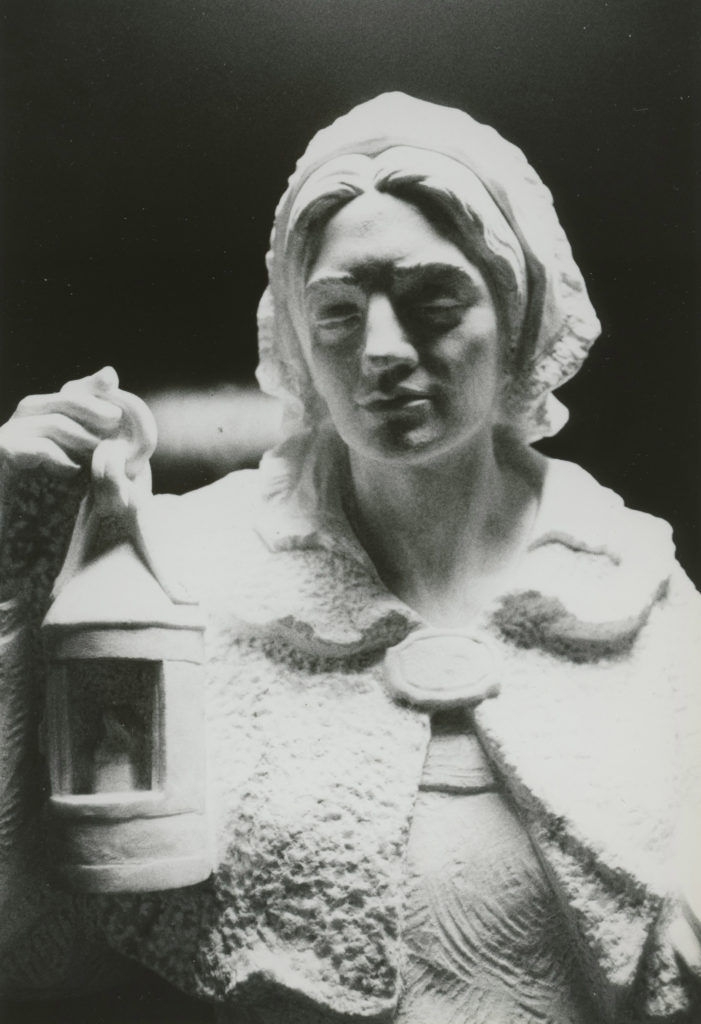
1975:
— A statue of Florence Nightingale, sculpted by Dr. Avard Fairbanks in Portuguese rose marble, was unveiled and dedicated.
— A Nursing Research Support Center was formed, which later became the Office of Research.
— The College sponsored the first of several National Transcultural Nursing Conferences.
1976: Joan Uhl, MS, PhD, Liz Close, MS and Joyceen Boyle, MS, PhD, were instrumental in forming a College Honor Society, a prerequisite to making formal application as a Sigma Theta Tau Chapter. Uhl served as the first Chapter President.
1977: The Geriatric Practitioner program directed by Margaret Dimond, PhD, and the Family Nurse Practitioner program directed by Sue Huether, MS, PhD, were established as separate graduate programs within the College of Nursing (combined in 1980). Research pathways in physiology, psychosocial and transcultural nursing were offered.
1977: Dr. Leininger established the Transcultural Nursing Program, a two-
year graduate-level degree. Transcultural nursing is an important area of
specialization in health care, and Dean Leininger was a pioneer in transcultural
nursing – not only at the University of Utah, but across the United States. She
assisted with the development of several courses and graduate programs at
other universities, including the University of Washington. The program ended
in 1979.
1978: The College, in collaboration with the Utah State Office of Education
and the Utah Health Department, received a Robert Wood Johnson
Foundation Grant to prepare School Nurse Practitioners at the
graduate level.
1979: Dean Leininger stepped down and Associate Dean
Annette Ezell, PhD, served as acting dean from January to
July 1980.
1978-1988
1979: The first Occupational Health Nursing Program (MS in Public Health) was established, and the Medical-Surgical Graduate Program was expanded to offer cardiovascular and respiration specialties, as well as concepts in teaching/learning and administration.
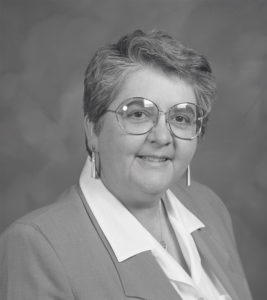
1980: Linda K. Amos, EdD became dean of the University of Utah College of Nursing, serving for twenty years. Dean Amos was an outstanding leader, innovator, and team builder. She was also devoted to diversity and helping students gain a better perspective on global health care. During her tenure as dean, the diversity program had the highest percentages of a diverse student body in the history of the College, which resulted in the College earning the Diversity Award from the University of Utah. Also during her tenure, the College became the first department on campus to integrate service learning into its undergraduate curriculum, and the first Presidential Endowed Chair was appointed within the College.
1985: The Women’s Health and Birthing Services program was established. The Salt Lake Valley Health Department provided clinic space, but health care services were provided entirely by Certified Nurse-Midwives and Women’s Health Nurse Practitioners who are faculty members of the University of Utah College of Nursing.
Distance Learning took on an increasingly significant role during this period. Courses were offered throughout the state, enabling students to achieve preparation as Advanced Practice RNs (APRN) without leaving the rural areas in which they live. The Psychiatric Nursing Program at the College of Nursing was the first program on campus offering a degree with some courses distance education.
EDNET (interactive television), audio and telephone conferencing, e-mail connections, and the distribution of classroom tapings and materials for at-home learning were methods employed successfully by several graduate programs.
1988-1998
1990:
— With funding from the Health Resources and Services Administration, the University of Utah admitted the first cohort of students into the Nursing Informatics graduate program. At the time, this was the only program of its kind in the United States. The program focuses on designing and building information systems for clinical nursing. Judith R. Graves was an Associate Professor in the College of Nursing, and the Director of the Office of Nursing Informatics from 1987-1990. She was the principal investigator on a $523,615 federal grant from the U.S. Public Health Service Division of Nursing. This funding helped grow the Nursing Informatics program in its early years.
— The Teaching Nursing graduate program was established and admitted its first cohort of students.
1993:
— The Gerontology graduate program was established.
— The Neonatal Nurse Practitioner graduate program (now the Neonatal track within the DNP program) was established.
1995: The Women’s Health Nurse Practitioner program (now the Women’s Health track within the DNP program) and the Dual Nurse-Midwifery/Women’s Health MS program (now the Dual Midwifery/Women’s Health track within the DNP program) were established and admitted their first cohort of students.
Nurse Midwifery - 1990's
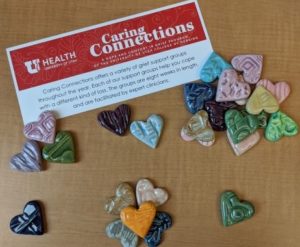 1997: Beth Cole, PhD hosted a small group session for people who were grieving the loss of a loved one. From there, the group quickly grew and Caring Connections: A Hope and Comfort in Grief Program was established. Originally, the program offered education and support to University Hospital staff members who provide end-of-life care, and organized bereavement groups for members of the community.
1997: Beth Cole, PhD hosted a small group session for people who were grieving the loss of a loved one. From there, the group quickly grew and Caring Connections: A Hope and Comfort in Grief Program was established. Originally, the program offered education and support to University Hospital staff members who provide end-of-life care, and organized bereavement groups for members of the community.
The mission of Caring Connections is to provide excellent evidence-based bereavement care across the intermountain west through clinician facilitated support groups. In keeping with the academic mission of the College, the program also provides opportunities for clinical education in grief and loss to students in health care professions, and to conduct research that will provide greater understanding of loss, grief, and bereavement.
Beth Ann Vaughan Cole, interviewed for the Aileen H. Clyde 20th Century Women’s Legacy Archive, 2014
1998-2008
1998:
— The College of Nursing Faculty Practice Organization (FPO) was established to support the patient care, research, education, and service missions of the College and its faculty members. The FPO (now known as Practice and Community Engagement) promotes and enhances faculty progress by identifying and developing research opportunities, high-quality, cost-effective patient care delivery systems, and educational products and services. Students in the program have the opportunity to apply knowledge and skills in a clinical setting under faculty supervision. Today, the program represents eight health care disciplines across 20 sites.
— Juvenile Justice faculty practice was established. Under a contract first negotiated in 1999, the College partnered with the Department of Pediatrics to provide primary medical care for teens at Juvenile Justice Services (JJS) detention centers along the Wasatch Front. The program started with just five centers. In 2014, it expanded to eight clinics from Ogden to Provo. The contract covers the program’s cost – including clinical nurses’ salaries – and generates 20 percent of the College of Nursing’s faculty practice revenue. The program is the only collaboration of its kind in the country.
2000: Sue Huether, RN, PhD was appointed as interim dean of the College of Nursing, replacing Linda K. Amos who stepped down as dean to become the Associate Vice President for Health Sciences.
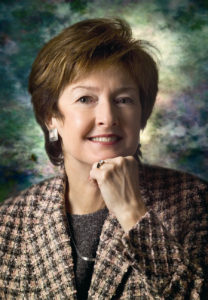
2001: Maureen R. Keefe RN, PhD, FAAN was named the fifth dean of the College of Nursing. Dean Keefe shared her vision of the College of Nursing with those around her and inspired people to work collaboratively toward a common, focused goal. During her tenure, the number of endowed chairs doubled, the Hartford Center of Geriatric Nursing Excellence and the VA Nursing Academy were both established. She also helped engage students in undergraduate research and interprofessional, simulations-based curriculum. She also helped raise $24 million in a successful campaign for a new College of Nursing building.
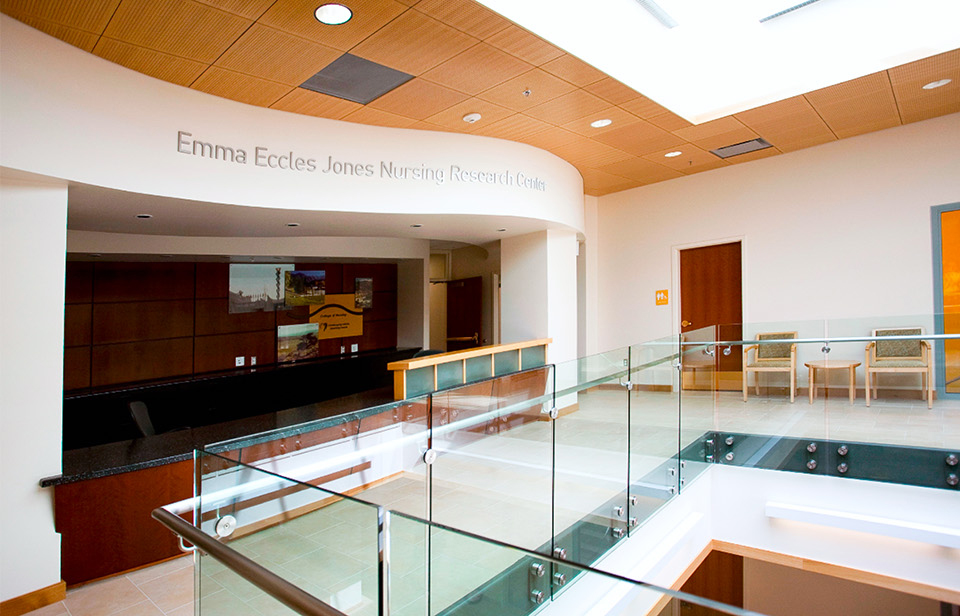
2003: The Emma Eccles Jones Nursing Research Center was established. The center provides a world-class space to facilitate the creative and collaborative work of numerous research teams who are striving to discover new knowledge that will improve health and quality of life for patients. The center was created in an effort to help increase future nursing faculty members and encourage nursing professionals to contribute to the future of the discipline. A donation of one million dollars from the Emma Eccles Jones Foundation provided funding needed to establish the center.
In 2004 the American Association of Colleges of Nursing (AACN) created the first new nursing degree in more than 30 years: the Doctor of Nursing Practice (DNP).
A call from the public sector and health care delivery systems were the catalyst for this historic transformation in graduate nursing education, resulting in a degree program to prepare practitioners with expanded knowledge in interdisciplinary teams, quality improvement, patient safety, information technology, change management, and leadership.
2007:
— The College of Nursing made history when it launched the first DNP program in the region. 32 students were admitted to the post-MS DNP program. After the DNP program launched, the Advance Practice Registered Nurses graduate degree was discontinued.
— The College was selected as one of the first four Colleges of Nursing in the United States to receive designation and funding as a Veteran Affairs Nursing Academy.
— The University of Utah Hartford Center of Geriatric Nursing Excellence was established. The center is an endowment funded through a one-million-dollar grant from the John A. Hartford Foundation to help develop geriatric nursing faculty.
2008-2018
2010:
— Through a generous donation from the Cumming Family Foundation, the $24 million renovation project on the 40-year-old College of Nursing building, now named the Annette Poulson Cumming Building, was completed. During the renovations, the building was completely emptied, and all faculty and staff were relocated to eight different locations throughout the community for the duration of the 18-month project. To facilitate a smooth transition for faculty and staff, Dean Maureen R. Keefe created a virtual College of Nursing by introducing a Wiki website, instant messaging, teleconferencing, and the dean’s blog. During the renovation, students continued to attend classes on campus at the Spencer F. and Cleone P. Eccles Health Sciences Education Building.
— The Simulation Learning Center opened for student and faculty use. The center is a virtual hospital that includes a 20-bed patient suite and 6 individual rooms, which can be configured in various ways to represent an ICU, ER, Lab, Labor, and Delivery Suite or a standard patient room. The center has 38 cameras and 32 microphones to capture and record the activities. Four debriefing rooms and two retractable screens can display multimedia presentations. Low, mid, and high-fidelity human patient simulators support student learning throughout the center. The SIM is an integral part of the undergraduate curriculum, and is heavily utilized within the College.
2011: The College established the Nursing Early Assurance Program (NEAP). The program is a track in the Baccalaureate Nursing Program that offers direct entry for candidates that are planning on majoring in nursing at the University of Utah. Candidates applying to the University of Utah as a first year in fall will begin the nursing program in approximately two years. NEAP eliminates the uncertainty associated with undergoing a competitive application process to gain entry to the pre-licensure nursing program after completing two years of General Education and Prerequisite coursework. NEAP candidates are encouraged to participate in enrichment activities during their first and second years, such as community-engaged learning, undergraduate research, honors, working towards a minor, or study abroad–thus enriching their university experience.
College of Nursing SIM Lab - 2000's
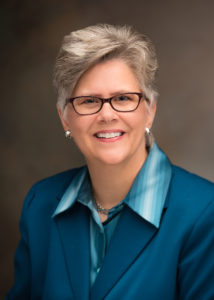
2013: Patricia Morton PhD, RN, ACNP-BC, FAAN became dean at the University of Utah College of Nursing, serving until 2018. Prior to joining the CON, she was the Associate Dean for Academic Programs at the University of Maryland. During her tenure as dean, the College accomplished several curriculum changes and renewal of accreditation, improved registered nurse licensure test pass rates, boosted faculty and staff salaries, and saw pledges for three new endowed chairs. During Dr. Morton’s tenure as dean, the College was ranked second in the nation for funding from the National Institutes of Health (NIH) in 2016 and received the New Era Award from the American Association of Colleges of Nursing (AACN).
2016:
— Through a $2.6 million cooperative agreement with the Health Resources and Services Administration, the Utah Geriatric Education Center (UGEC) was established. Using distance learning and two-way contact with 19 urban and rural nursing care facilities, the certification program started with its first class of nurse practitioner students.
2018-Present
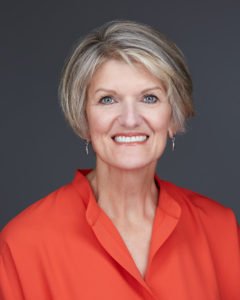
2018:
— Barbara Wilson, MSN, PhD, Associate Dean for Academic Programs in the College of Nursing, was appointed as interim dean for the College. She served as interim dean until 2020.
— Faculty Practice Primary Care was established, offering health services in a variety of locations along the Wasatch front and back, including RedMed Employee Clinic at the Student Union, University of Utah; Summit County Health Department Clinics in Park City, Coalville, and Kamas; Urban Indian Center, Salt Lake City; Student Health Center, University of Utah; and the Juvenile Justice Health Care Service.
2019:
— The Urban Indian Center (first established in 1974) approached the University of Utah College of Nursing to open a nurse-led clinic at their center in Salt Lake City. The center was created due to American Indian and Alaska Native populations feeling that their needs were not being met in conventional health care clinics. Nurse practitioners at the clinic are trained to provide culturally competent and responsive care to the typically underserved American Indian and Alaska Native populations living in the State of Utah.
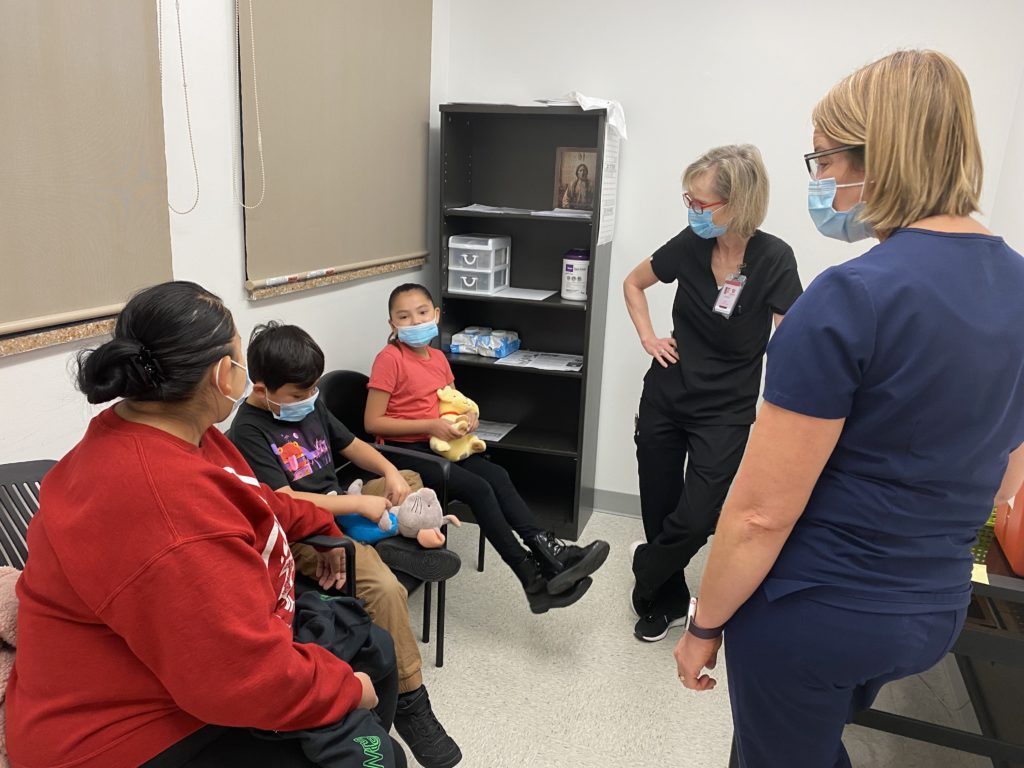
— The Center of Excellence for Exposure Health Informatics (CEEHI) was formally established by the University of Utah. CEEHI is a multi-disciplinary center co-led by Nursing Informatics and Biomedical Informatics faculty along with collaborators from across campus, with a mission to “foster and facilitate the next geneation of exposure health research through use and development of novel informatics methods and solutions.”
Students in front of helicopter - 2020
2020:
— The Dual DNP-PhD program was established, admitting students with an earned bachelor’s degree in nursing and requires full-time (nine credit hours minimum per term) enrollment for five years. Students can choose their specialty track for advanced practice from four primary care areas including Adult-Gerontology Primary Care Nurse Practitioner (AGPCNP), Family Nurse Practitioner (FNP), Certified Nurse Midwifery (CNM), and Women’s Health Nurse Practitioner (WHNP).
— Leaders of the College of Nursing Gerontology Interdisciplinary Program (GIP) and the School of Medicine’s Division of Physician Assistant Studies developed a joint master’s degree. The combined program has 87 physician assistant credits, 25 gerontology credits, and takes 36 months to complete. Students who are admitted to the program begin their training with gerontology coursework, and end with preceptorship and research methods in
aging courses.
— The Family Caregiving Collaborative was established. The Collaborative supports the advancement of person- and family-centered care, where patients and caregivers define their family and determine how they will participate in care and decision-making. The Collaborative’s mission is to help create a future where caregivers of all ages, races, ethnicities, and gender are seen, heard, understood, valued, connected, and supported.
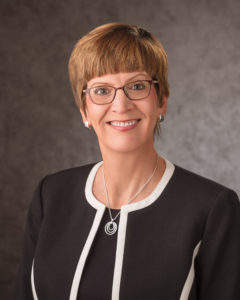
2020-present: Dean Marla J. De Jong, PhD, RN, CCNS, FAAN, was appointed Dean of the College of Nursing in 2020. Dr. De Jong is a lifelong leader in the field of nursing. Before joining the College of Nursing at the University of Utah, she had an impressive career in the military with nearly 29 years in the United States Air Force, retiring at the rank of Colonel. Dr. De Jong’s work has informed and shaped leadership, research, education, health policy, and military and civilian clinical practice. She conducted funded research, served in leadership positions for nursing organizations, served as an editorial board member for several journals, and published 55 journal articles. She was inducted as a Fellow in the American Academy of Nursing in 2012. In addition to her role as dean, she also serves nationally on the American Academy of Nursing Fellow Selection Committee.
Resources
J. Willard Marriott Library Special Collections and Digital Library, University of Utah
— University of Utah College of Nursing records, 1943-1983
— Everett L. Cooley Oral History Project, 1983-2018
— Utonian Yearbooks digital collection
Spencer S. Eccles Health Sciences Library, University of Utah
— College of Nursing digital collection (currently under development)
— History of the Health Sciences digital collection
— Public Affairs of Health Sciences Center digital collection
— Utah Nurse digital collection
Acknowledgements:
— Dr. Beth Cole, Emeritus Professor, College of Nursing, University of Utah
— Mindy Francis, Office of Advancement, College of Nursing, University of Utah
— Elaine Thornton, History of Health Sciences, Spencer S. Eccles Health Sciences Library, University of Utah
— Mike Thelin, Digital Publishing, Spencer S. Eccles Health Sciences Library, University of Utah
If you have any questions or feedback about this digital exhibit, we encourage you to contact us!
